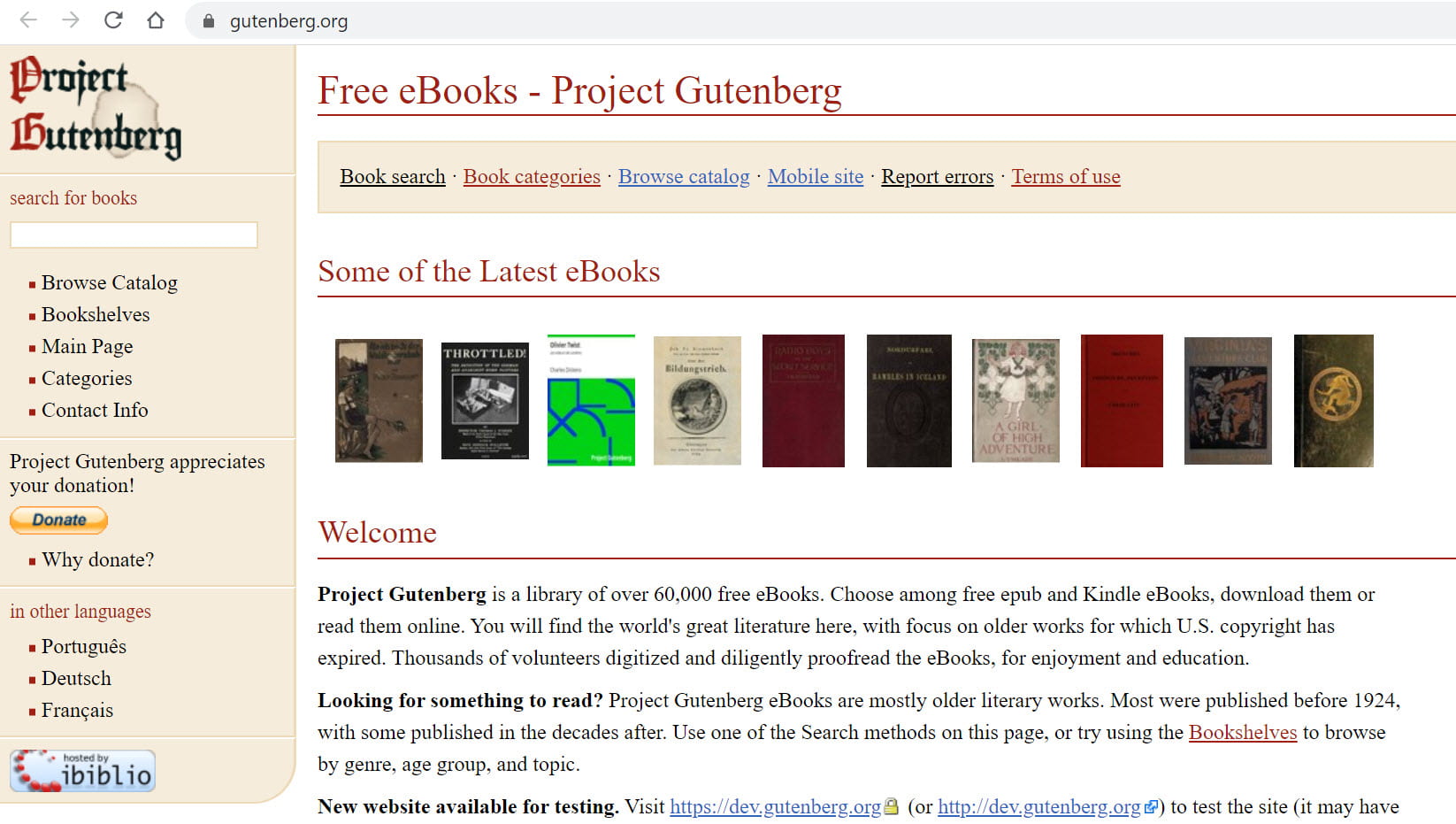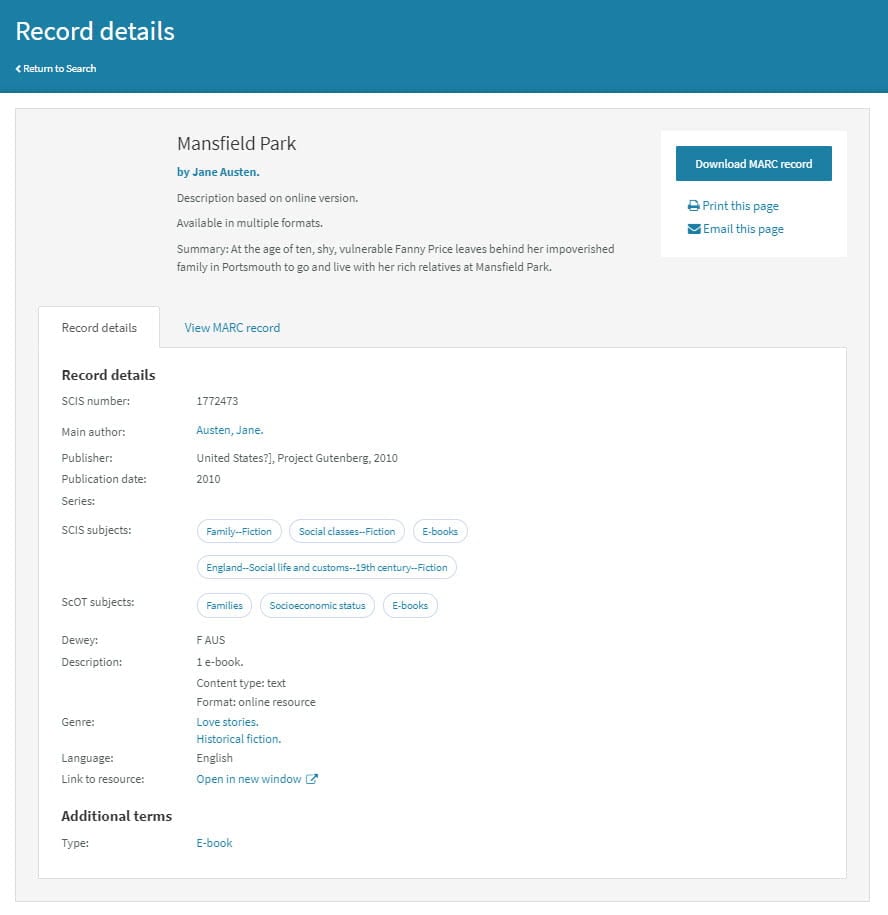Welcome to lesson 5 of the SCIS short course! Let’s get started …
Subject cataloguing is the process of assigning terms that describe what a bibliographic item is about.
Cataloguers perform subject analysis for items in their library, most commonly selecting terms from an authorised list of subject headings, otherwise known as a ‘controlled vocabulary’. Controlled vocabularies often take the form of a ‘thesaurus’, which is used to link similar and related terms. In addition to this, a thesaurus also shows hierarchical relationships between terms. For the sake of simplicity, we will refer to this as ‘subject headings’ throughout this lesson.
Do I need to use a controlled vocabulary?
The decision not to use a controlled vocabulary is not something that would be noticed by most library users. The impact of controlled subject headings is subtle, yet it has a profound impact on your catalogue’s ability to retrieve results. It is an ‘unknown unknown’ for users, who do not know about items that their search does not retrieve.
The most common examples of uncontrolled vocabularies are social media tags or user-generated tags — in both examples, users are free to choose any term they wish. It is important to note the limitations of working with an uncontrolled vocabulary.
Consider how controlled vocabularies would help to clear up any confusion in the following situations:
- Synonyms (two words with the same meaning)
- Homographs (different words with the same spelling).
Without a controlled vocabulary, one cataloguer may assign the subject ‘Insects’ to a record, and another may assign the subject ‘Bugs’ to a similar record. This would result in discrepancies between search results, meaning that the two different subject headings will return two different sets of resources.
Subject heading lists will likely include preferred and non-preferred headings. A controlled vocabulary would choose an authorised, or preferred, subject heading such as ‘Insects’. It may also display ‘Bugs’ as a non-preferred term.
Please note, more than one subject heading can be assigned to a record.
How do people search?
Library catalogues usually provide two main types of search:
- A ’basic’ or keyword search that allows the user to type in a search term or phrase and then search across the whole database. This will often bring back too many search results, which then have to be narrowed down or filtered.
- An ’Advanced search’, which allows the user to do a much more specific, or targeted search by selecting particular fields. Typical fields include author, title, series, subject or ISBN. This allows for greater precision in your search results.
How do users benefit from subject headings?
There are several benefits of using subject headings, rather than keywords, in advanced searches. Although it can be assumed that most novice catalogue users will use keyword search rather than subject search, it is important that we communicate the benefits of the latter in order to enhance our library users’ information retrieval skills. This, in turn, means they will make the most of your high-quality cataloguing.
Subject searches expand their understanding of what is available
By performing a subject search rather than a keyword search, users can gain a broader understanding of the resources available in the library. For example, say a user enters the search query ‘Super heroes’ — but the preferred term is ‘Superheroes’. Users will be pointed toward the correct term and will see a broader range of subject headings that may assist their search.
Look at the following image as an example. If a user performs a subject search on ‘Flowers’, they will be directed to a range of resources tagged with that subject heading. But before they do, they might be interested in seeing what other options are available. While the user started their search broadly, they might be interested in browsing narrower terms that they didn’t think to search on — or perhaps a related search that might be of interest to them.

Subject headings as access points
In the Resource Description and Access (RDA) standard, subject headings are presented as access points, which allow users to follow an efficient path for resource discovery. If we go back to the idea of the key functions of the library catalogue that we explored in lesson 3, we can understand that subject access points support both greater discoverability and navigation.
RDA supports the inclusion of access points, which, together with authorised subject headings and name headings, allows users to refine their searches. Of course, without authorised terms here, the catalogue’s ability to point users toward relevant resources is hindered; say one person has used the subject heading ‘bugs’ and another has used ‘insects’ — a user will only find one or the other, not both.
Choosing which subject headings to use
Your library users should be at the forefront of your mind when choosing which subject headings to prescribe to your catalogue; it is important that the subject headings align with the vocabulary that they would use. Luckily for cataloguers, there are a number of subject heading lists available for you to choose from, many of which have been created specifically for use in certain fields. Two lists commonly used in the school library environment are SCIS Subject Headings List and Schools Online Thesaurus (ScOT).
Each cataloguing authority that creates these subject headings often has an additional product called ‘authority files’ that allows the catalogue and, ultimately, the users, to reap the benefits of
authorised subject and name headings.
What are authority files?
An authority is the authorised or preferred form for a heading — most often names and subjects — in a controlled vocabulary. An authority file is an index of all authority records of any given agency or library. When your library users perform subject searches, authority files also act as ‘recommended searches’. It can point users to the correct subject heading and help them understand how to narrow or broaden their search.
The inclusion of authority files in your library catalogue ensures compliance with RDA standards. As part of the RDA standard, data used in records to describe ‘an entity’ associated with that resource — be it a concept, person, family, or corporate body — should help users find, identify, clarify and understand each entity.
Look at the example below. The authority record for ‘Superheroes’ leaves no confusion as to how to use this subject heading. This not only helps make the cataloguer’s job easier but also the library users.

SCIS Subject Headings List (SCISSHL) or Library of Congress Subject Headings (LCSH) have authority files available for you to subscribe to. Please note, your subject headings and authority files should come from the same source.
Activities
Become familiar with different search options offered by OPACs and observe the usefulness of controlled vocabularies. Go to an OPAC in your library system or any other catalogue.
- Do a basic keyword search for a term eg Houses, then go to advanced search, select subjects and search for the same term. Compare the results.
- Find a ‘Browse search’ option for subjects. Browse for any term e.g. Houses. This browse list is populated from the system’s authority list of subject headings. Can you ascertain which subject heading list the terms come from?
Some library management systems use tag clouds and others use facetted searches to display the controlled vocabularies. Look for examples of these in your system or any other catalogue.
Conclusion
So now you have an understanding of the importance of controlled vocabularies, subject headings, and authority files in the library catalogue. Each one significantly enhances the consistency, value, and usability of your library management system and search functionality. You have seen how people search for resources and how different search interfaces produce varying results. Next week we’ll explore classification, Dewey, and call numbers.
Further reading
- Schools Catalogue Information Service: Subject Authority: avoiding the unknown unknown https://scis.edublogs.org/2017/03/27/subject-authority-avoiding-the-unknown-unknown/





 Mavis Heffernan, SCIS Cataloguer, explores special book numbers.
Mavis Heffernan, SCIS Cataloguer, explores special book numbers. 






